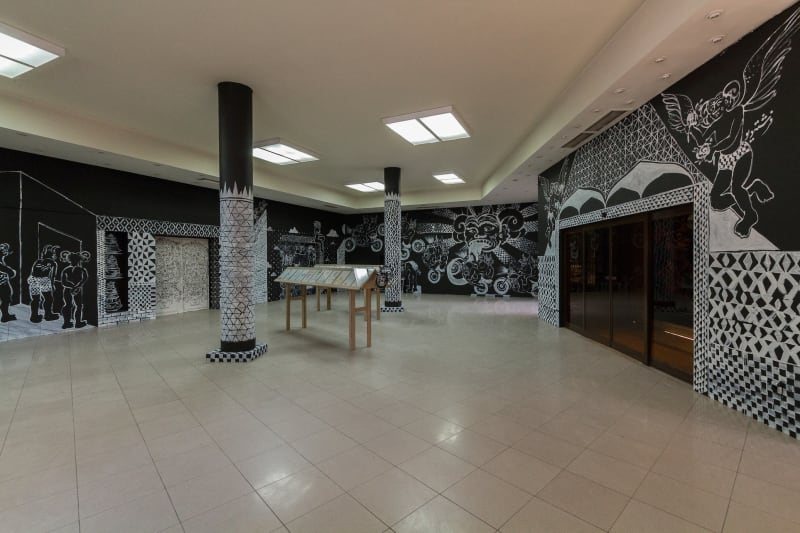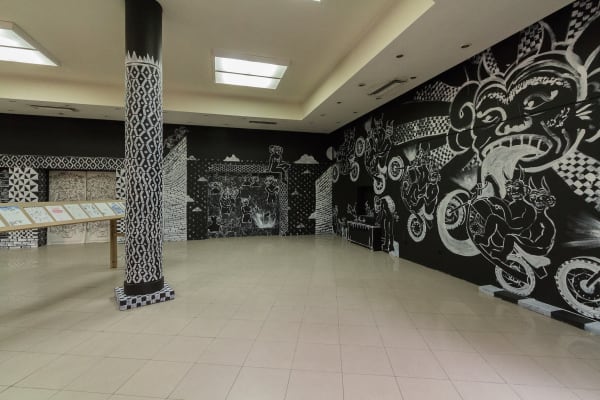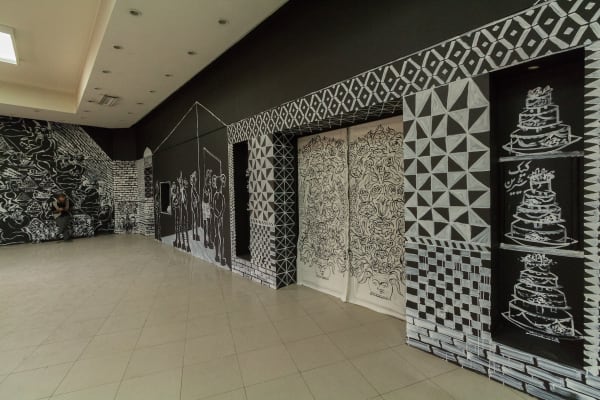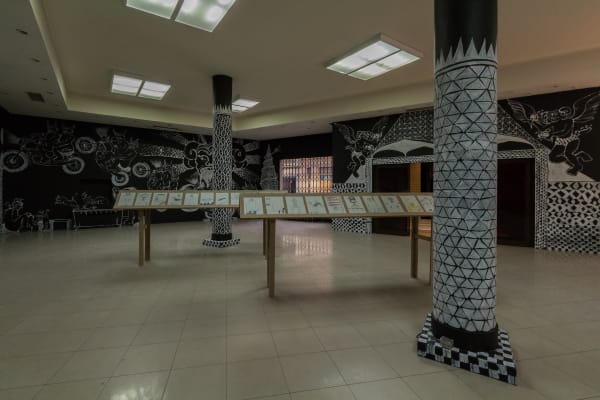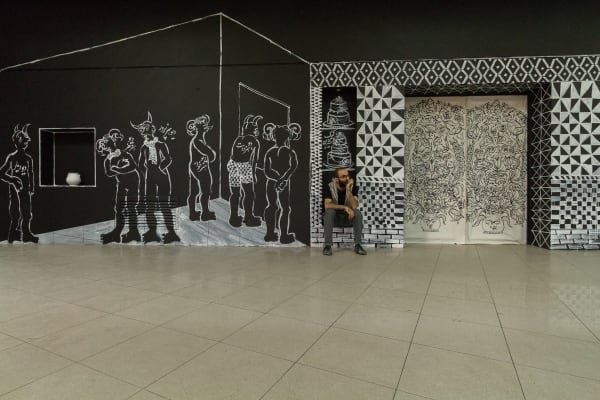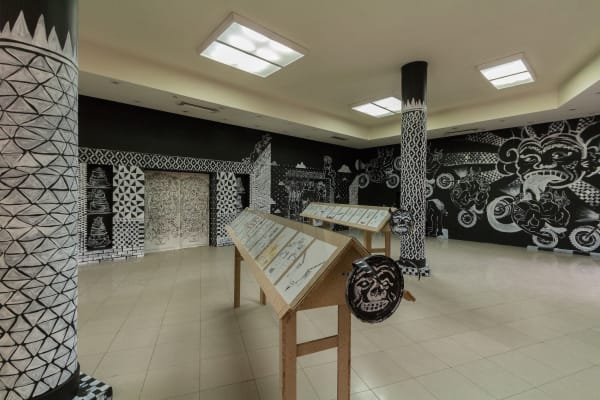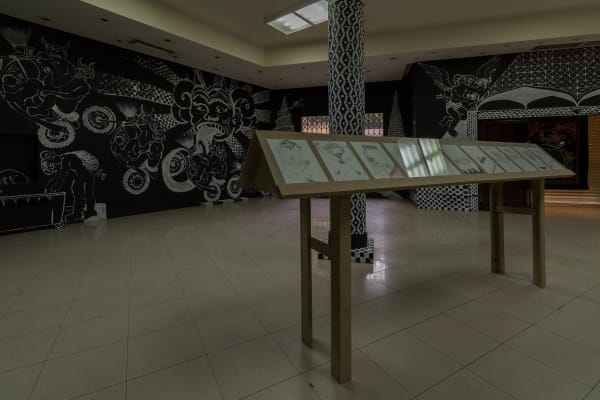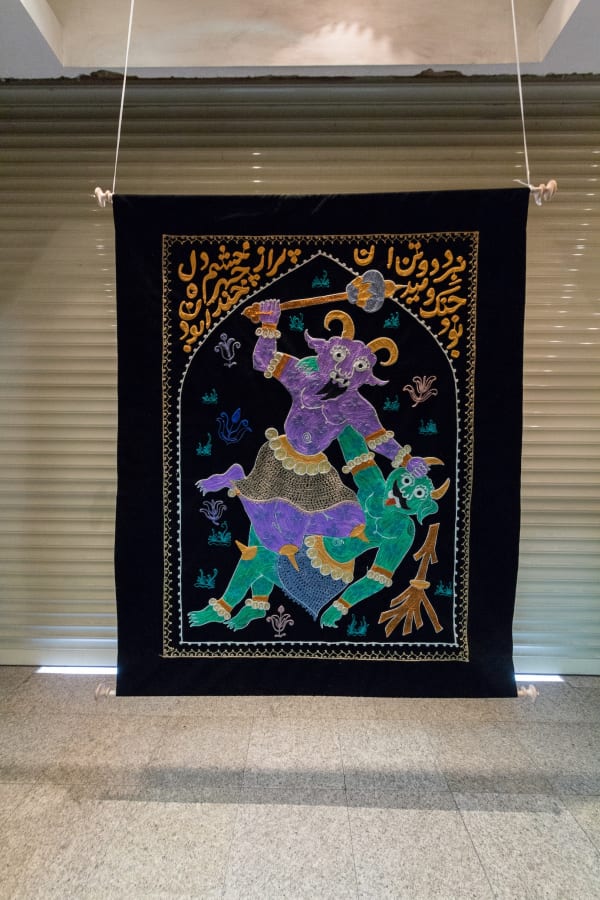Iman Raad | “A Show of Forty Drawings and Some": Dastan:Outside | Former Building of “Shirin Confectionary”
“A Show of Forty Drawings and Some by Iman Raad” at the Former Building of “Shirin Confectionary”, a Dastan:Outside Project
Dastan is pleased to announce the opening of “A Show of Forty Drawings and Some by Iman Raad” on June 17, 2016, at the former building of “Shirin Confectionary”. The exhibition will be open for public viewing through June 24.
This exhibition is part of a short-term project programmed by Dastan Outside the Basement and Sohrab Kashani at the former building of “Shirin Confectionary”. This project has become possible with support from the building owners and will continue until its demolition. Shirin Confectionary’s history dates back to 1946 when Mohammad-Reza Azarba opened his first sweets shop at the corner of Shah-Reza and Pahlavi (known as Chahar-Rah-e Vali-e-Asr today). When his business developed, he decided to move it to a larger building with more facilities in Kakh (now Felestin) Street. Of his three daughters, the elder, Nasrin, had gone to Germany to study arts and had become acquainted with Karl Schlamminger (b. 1935), her classmate whom she got married to later. During the same period, Azarba’s other daughter, Shirin, was attending confectionary courses in Germany. Schlamminger moved to Iran and on Mohammad-Reza Azarba’s request, designed the interior of the sweets shop in Kakh Street. The design of the interior, furniture and shelves of the shop at that time was a rare phenomena at the time and was considered an artistic event. Having this exhibition in the former building of Shirin Confectionary is a tribute of that period and the innovative move by Azarba family.
During his career, Iman Raad (b. 1979, Mashad) has worked both as a designer and an artist. He has won several awards including the first prize at the Trnava Poster Triennial in 2009, and has had his work included in books such as “The Phaidon Archive of Graphic Design” (2012). Iman’s works have been exhibited in several exhibitions but rarely shown in Iran.
Iman Raad’s works have been inspired by ancient traditions. Elements of architecture, calligraphy, poetry, literature and traditional patterns can be traced in his design and artistic works. This exhibition includes forty drawings on paper that have been created during the past year. In addition to these drawings, the exhibition space has become a frame for wall drawings based on the context of the exhibition. These drawings depict a sense of culture and fabric of the city we live in, i.e. Tehran: where the most traditional and primitive aspects of life continue to live on with modern and contemporary features. Iman has derived inspiration from traditional tile-works, like the tile-works in Golestan Palace, to show different scenes next to each other, without them having linear or temporal relations, but nevertheless creating a more general view of his narrative.
Div, a central element both in the wall drawings and in the works on paper, is one of the ever-present characters in the literature of our region and its presence in the contemporary period, compared to other characters, is almost unique. Div in these works acts a the narrator of a fable — the viewer faces the stories from the perspective of the Divs; Divs that only have a “mental life” and narrate the chaotic time of Tehran, where everything from the past and the present co-exist. This temporal chaos can also be seen in the works in their use of painting elements from different periods, including the Safavid, Qajar, modern and contemporary periods.
* Brian O'Doherty's series of essays titled “Inside the White Cube”, have provided the basis for most of today's contemporary galleries. The white cube allows the viewer to focus on the exhibited artworks without any distractions. However, many of today's works of art are created to induce a feeling or to create an experience for the viewer. Often, even the white cube cannot provide the optimal environment for such artworks. In efforts to free the artist from the confines imposed by any single gallery space, Dastan has decided to extend outside the basement. The gallery, in parallel to its current program, exhibits at various locations across the city in order to accommodate the artist and to improve the experience of the viewer.
** Sohrab Kashani is an interdisciplinary artist and an independent curator based in Tehran. Sohrab is the founder and director of Sazmanab, independent non-profit art organization and residency program in Tehran established in 2008. Sazmanab supports artistic work in a wide range of media through exhibitions and events, residencies for artists and curators, educational initiatives, workshops, talks, and publications. By establishing local and international relationships, as well as diversifying both the practitioners and audiences of contemporary art, Sazmanab aims to support and expand the knowledge, appreciation and practice of contemporary arts in Iran. As of 2016, Sazmanab creates projects and publications, and hosts exhibitions and events off-site in collaboration with other spaces and venues.
